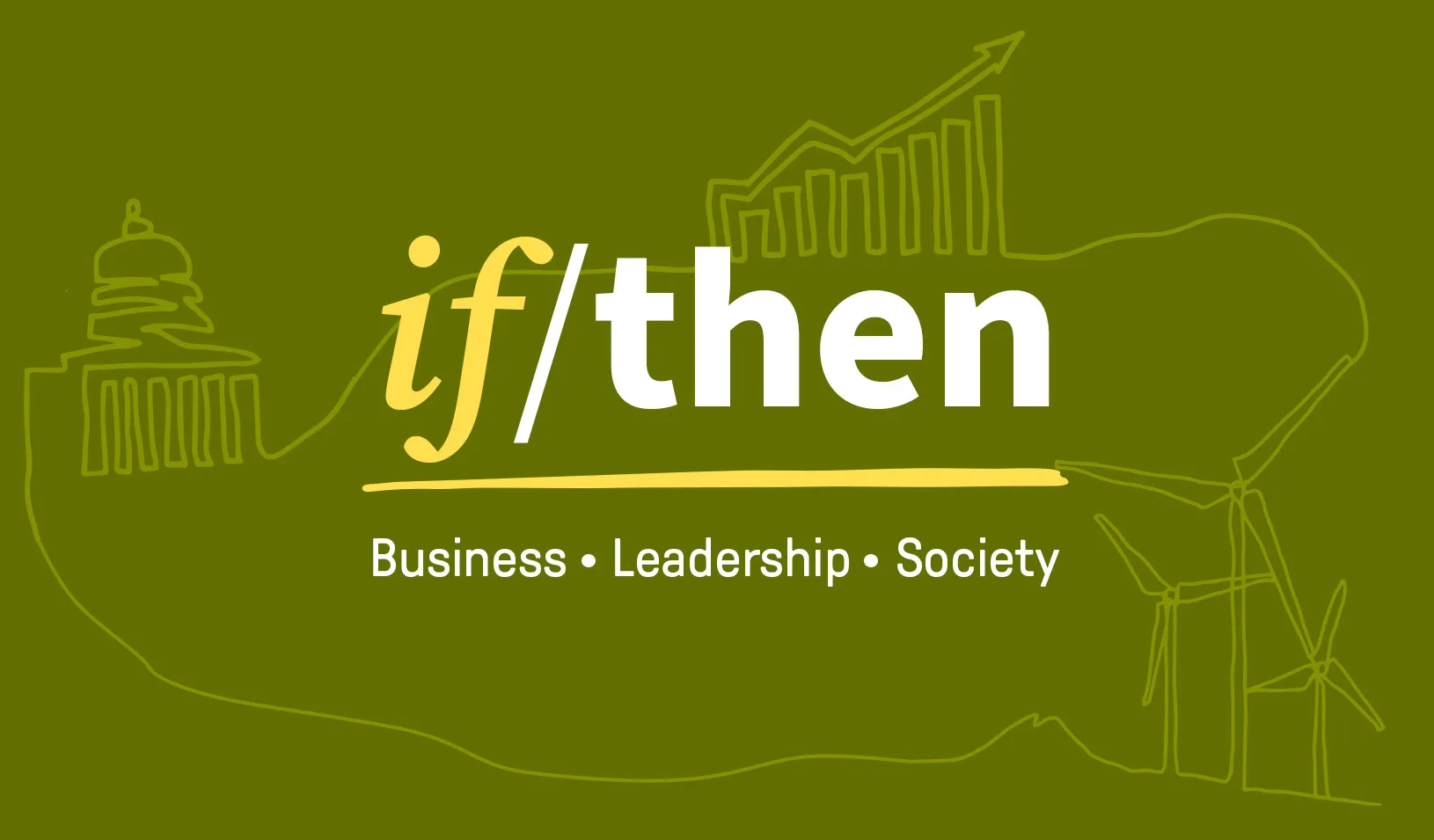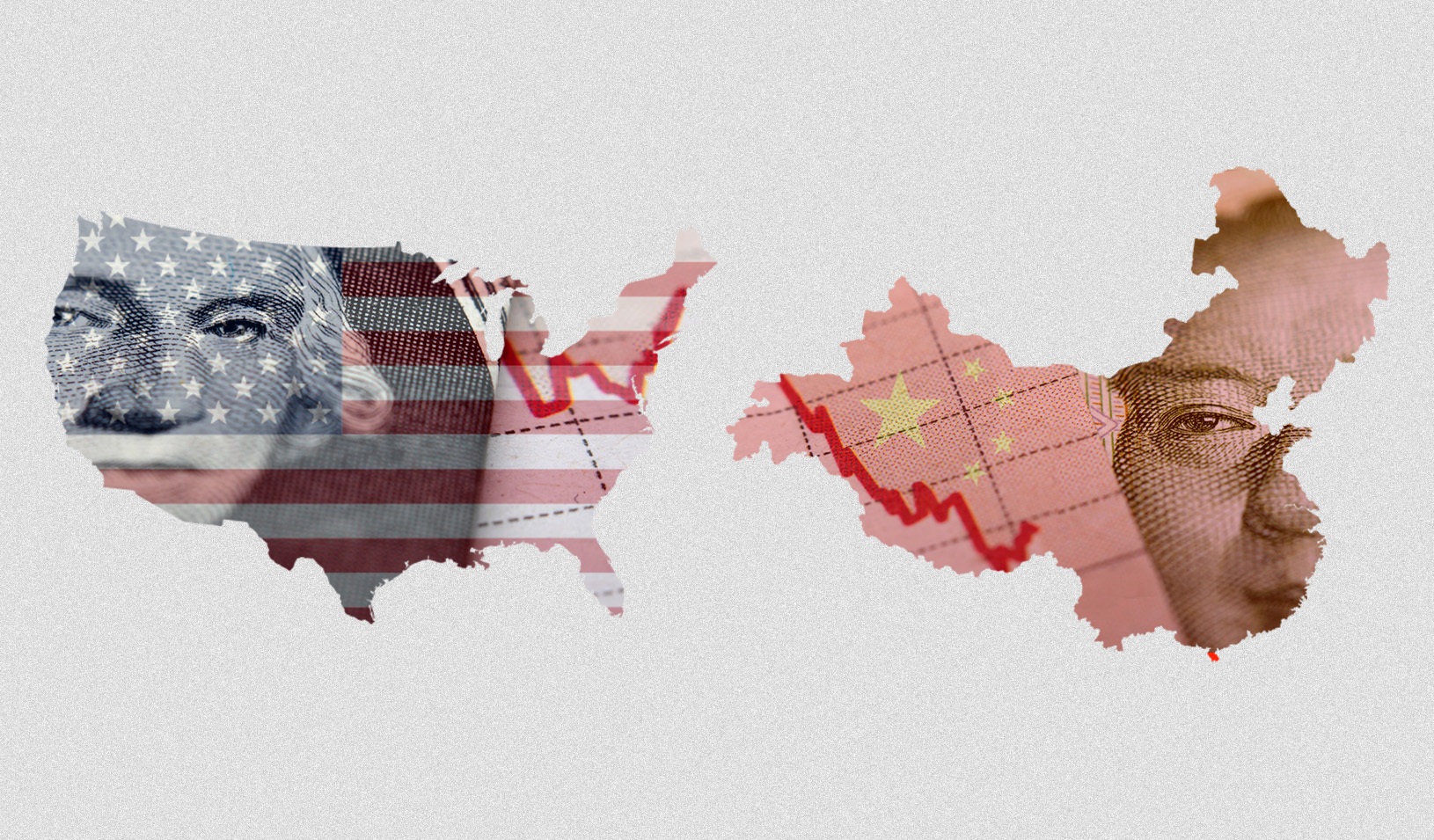Finance experts like Darrell Duffie see digital currency as an inevitability. “It’s hard to imagine that 100 years from now, people will be reaching into their pockets and pulling out grubby bits of paper,” he says.
As the Adams Distinguished Professor of Management and Professor of Finance at Stanford Graduate School of Business, Duffie’s research centers on banking, financial market infrastructure, and fintech payments. And with digitization already transforming the way money moves around the world, Duffie is particularly interested in how digital currency, whether developed privately or issued by governments, promises to revolutionize finance even further. In this episode of If/Then: Business, Leadership, Society, he explores how it could even expand economic opportunity for people left out of the current financial system.
Duffie’s research has tracked countries’ development and rollout of central bank digital currencies (CBDCs). In contrast to cryptocurrencies like Bitcoin, a CBDC is backed by a central bank and is essentially a digital version of a country’s fiat currency. “Virtually all countries are exploring a central bank digital currency for potential use,” he says, and some, like China and the Bahamas, have already implemented them. This shift, Duffie believes, could offer significant benefits over the current financial system by sidestepping the high fees and inefficient timelines associated with moving money, particularly across borders.
Duffie notes that a well-designed CBDC could also address the issue of financial inclusion. “Millions of Americans do not have a bank account. They’re off the grid in terms of payments,” he says. “Maybe this technology would allow many underprivileged Americans to get access to the payment system.”
Despite the political challenges of transitioning away from traditional currencies, Duffie believes digital currencies are on the horizon. The challenge, he says, is striking the right regulatory balance between fostering innovation and mitigating risks. As this episode of If/Then explores, if the U.S. wants to future-proof banking, then a digital dollar could be a solution.
Listen & Subscribe
If/Then is a podcast from Stanford Graduate School of Business that examines research findings that can help us navigate the complex issues we face in business, leadership, and society. Each episode features an interview with a Stanford GSB faculty member.
Full Transcript
Note: This transcript was generated by an automated system and has been lightly edited for clarity. It may contain errors or omissions.
Kevin Cool: If the U.S. wants to future-proof banking, then a digital dollar could be the solution.
Dawn Sands: You travel to the states, you hear your friends or family members talking about various wallets. These Venmos, these cash apps that they use and transfer money, and you’re like, oh, okay. And then you hear a sand dollar and you’re like, okay, now The Bahamas is catching up.
Kevin Cool: Dawn Sands owns a restaurant in Nassau called NRG Nutrition ready to go in 2020. She was one of the first businesses to start using the country’s new digital currency. That’s a way of paying for transactions electronically, a little like Bitcoin, but backed by the country’s central bank in The Bahamas. It’s called the sand dollar.
Dawn Sands: I did not operate in the cryptocurrency space whatsoever. In the beginning. I was very confused about that. I was more trying to understand the technology behind it. It was a blockchain for me, the sand dollar, it just took a shape and form in my brain. Just the way I hold my credit card. I’ll hold my phone as a wallet and my money is boxed by the Central Bank.
Kevin Cool: Dawn has a good reason to want an alternative to conventional banking.
Dawn Sands: I don’t know if it’s the same where you’re from, but in The Bahamas, banking is a challenge from opening. An account can take you days, and when I say days, you can sit at the bank for literally six to eight hours and then get an account number days from there. My money sits in the bank and my bank is always being hacked. Yeah, my bank account was just hacked the other day. It got hit $4,000 and I’m still waiting to be paid.
Kevin Cool: Her frustrations with banks make her excited about the sand dollars benefits.
Dawn Sands: For example, if you’re going to allow me to receive a sand dollar, I don’t have to pay a fee. Literally, there’s a bank over here that charges $5 for every a hundred I think it is that you deposit. If I can use more than I can deposit less of the bank, I guess that’s what the future is going to look like. If we continue on the path.
Kevin Cool: The United States isn’t getting its own digital currency anytime soon, but its proponents say it will come with many consumer benefits. If it does, it’s already a reality in 11 countries, including China and 130 countries are exploring it. What do these developments mean for the future of banking and finance? Will the U.S. dollar keep its status as the world’s standard if it lags behind on a digital currency? This is if then a podcast from Stanford Graduate School of Business where we examine research findings that can help us navigate the complex issues facing us in business, leadership, and society. I’m Kevin. Cool. Senior editor at the GSB. Today we speak with finance professor Daryl Duffy.
Darrell Duffie: It’s hard to imagine that a hundred years from now, people will be reaching into their pockets and pulling out grubby bits of paper.
Kevin Cool: The focus this episode, if the U.S. wants to future-proof banking than a digital dollar, could be the solution. What do we mean, first of all by a digital currency? How do we differentiate that, say from Bitcoin?
Darrell Duffie: So Bitcoin, because it’s expensive and takes time to use for making payments, it’s not really a very good form of money for making payments, and most importantly, if I promise to pay you for whatever, a cup of coffee or a new car, the money that I send may be worth less than what we agreed by the time it gets to you, because Bitcoin is moving around a lot.
Kevin Cool: It’s a lot of volatility. Yeah.
Darrell Duffie: Price volatility is very high. It’s not that reliable. We, for many years will probably continue to just use our bank accounts for those things, but people are now talking about going to a new world of central bank digital currency or what’s sometimes called a digital dollar. What does that mean? First of all, it means that instead of paying money out of your own bank account at wherever you bank Chase or Wells Fargo, you’ll be paying money out of your account with the Fed, the Federal Reserve Bank. That basically is the central bank for the United States.
Kevin Cool: Let me just clarify. When you say you would be paying from your account, I don’t have an account with the Federal Reserve right now. How would that work?
Darrell Duffie: Well, you don’t have an account at the Federal Reserve now because we don’t have digital dollars right now. The only actors in our economy that have accounts at the Federal Reserve are large financial institutions. Now, we’re not going to knock on the door of the Federal Reserve Bank of San Francisco and ask them for an account. They’re going to delegate that operational side to a commercial bank or to another payment service provider like PayPal or somebody else. So we’ll call Wells Fargo or PayPal and say, would you provide us with some digital dollars that you’ll hold on our behalf at the Fed?
Kevin Cool: What advantage would there be to having a digital dollar rather than just having my bank account at Wells Fargo where I have dollars that I can access digitally?
Darrell Duffie: Well, the question you asked has been the central question under debate for the last five years or so in the us, but there are advantages and disadvantages. Let’s run through a few of them. The Fed doesn’t go bankrupt as opposed to some banks.
Kevin Cool: I certainly hope not.
Darrell Duffie: Well, Silicon Valley Bank went bankrupt, and if you had your account at Silicon Valley Bank rather than at the Fed, you might’ve lost money. Another reason might be that the digital dollar be built on a blockchain like Bitcoin that would allow you to buy things automatically and not fear that you wouldn’t get what you bought. For example, if you were to buy Euros with your digital dollars, doing it on a blockchain means that code software can guarantee that you will receive your Euros if your dollars are taken, as opposed to the current world in which your dollars go somewhere and maybe the Euros that you bought don’t come back to you. Currently, banks are not providing a service that guarantees those payments.
Kevin Cool: What are the impediments? Is it a philosophical policy difference that would be getting in the way here, or what would be the impediments for the United States to do this right away or in the short term?
Darrell Duffie: I think there are two major impediments. Both are partly political. One of them is the concern about privacy. There’s a suspicion by some that if your money is held on account at the Fed rather than your commercial bank, that you will lose privacy over your payments. It’ll be a so-called Big brother situation in which the government could it’s suggested spy on your payments and take advantage of that information to your detriment
Kevin Cool: Because the government has visibility now into essentially all of your transactions, right?
Darrell Duffie: Well, today, they’re not supposed to get access to your transactions unless you’re doing something suspicious, and in that case, your bank is supposed to report you. Last year there were 4 million of those suspicious activity reports or SARS sent to the government by banks. Now, a small fraction of those were actually illegal payments, but the government already has access whenever there’s some potential for a suspicious payment. It’s suggested that by some, not me actually, that if there were a digital dollar, the situation would be much worse because instead of asking banks to send that information, the government supposedly would have direct access to it. There’s a misconception there. First, it’s not necessary that that technology provides information to the government that it couldn’t already get, and secondly, the way that U.S. politics work, the Fed would almost certainly need to guarantee that it couldn’t access all of your payment information or give it to the government, which is a different proposition. So there is a reason to be concerned about privacy, but that’s one of the reasons that Central Bank digital currencies in some countries are going to be delayed until people are confident.
Kevin Cool: So would you say this is inevitable at some point, or not necessarily?
Darrell Duffie: It’s hard to imagine that a hundred years from now people will be reaching into their pockets and pulling out grubby bits of paper.
Kevin Cool: Well, I hope pennies at least are gone by then. Don’t give me to start it on pennies.
Darrell Duffie: I imagine eventually we’ll be using digital dollars and not using paper money to the extent that we use any government currency.
Kevin Cool: Why don’t you just give us sort of a lay of the land in terms of what countries are doing this, how far along are they and so on.
Darrell Duffie: Virtually all countries are exploring a central bank digital currency for potential use. Some of them have gotten to the point where they’ve actually developed or in the course of developing the technology, which is not easy. Some of them have gotten further to the point of piloting a central bank digital currency, and some very few have actually released a central bank digital currency for general use. Like Bahamas is one example, but Bahamas is a small country, and even in Bahamas, a small fraction of money is held in the form of their digital currency, which is called the sand dollar
Kevin Cool: Appropriately.
Darrell Duffie: The largest country that’s well along the way with a central bank digital currency is China. In around 2020, China began piloting a major piloting of its central bank digital currency. It’s only a fraction of 1% of the total amount of money issued by the central bank. Most of it is in paper form. People in China already had access to a really whizzbang electronic payment systems, the two most popular of which are called Alipay and WeChat Pay, which are private sector payment systems put up by two of their largest tech companies. It would be as though Amazon or Google or Facebook or Microsoft were to make available digital payment accounts to everyone and allow you to pay into and out of those accounts. You can imagine that would be quite a powerful option in the United States as well. But in China, those two payment systems account for more than 90% of urban payments.
Kevin Cool: Now, the dollar historically has been essentially the reserve standard for global business. Is the fact that the Chinese government is pursuing this, an effort to encroach on the dollar as that standard.
Darrell Duffie: That’s the central question of a report that I worked on as part of a large committee of experts a few years ago. China’s new central bank digital currency does not threaten the dominance of the U.S. dollar as you described it. It remains and will remain for decades. The go-to currency for international finance, whether it’s central banks holding dollars in their foreign exchange reserves or it’s banks making cross-border payments to each other or invoicing for goods and services or in the foreign exchange market, trading one currency for another, the dollar is by far and away dominant and will remain dominant for decades.
Kevin Cool: For decades. You are listening to if then a podcast from Stanford Graduate School of Business will continue our conversation after the break. The broader experience with cryptocurrency is quite volatile, obviously. I mean, we just saw the whole implosion with FTX and there’ve been other bad actors in this space. What have we learned about cryptocurrency at this point, about its effects on society, its potential advantages in the future? What are we supposed to think about cryptocurrency right now?
Darrell Duffie: It’s very early stages, Kevin. It’s kind of like the Wild West or the beginning of the.com era where the potential is great, but it’s a bit unruly. The U.S. government is lagging relative to other countries and setting out the rules for cryptocurrencies and digital assets more generally. And until those rules are laid down pretty clearly, you can expect a very bumpy ride. In terms of adherence to the law or what is the law, the questions about what is the law that is, you can expect lots of litigation, you can expect some collapses like the ones that we’ve seen, and FTX was only the most spectacular example, but there have been many others. What we should be thinking about is what are the applications of this new technology that could help Americans or people generally, and how can those be safeguarded? How can we avoid losing those opportunities either by failing to regulate or by overregulating?
It’s a balance, but consider the opportunities. Like I mentioned earlier, if you can make payments on a blockchain, you can assure the safety of payments. You can arrange for payments automatically without fear. If the software is reliable, you could potentially provide payments much more broadly in the economy. That issue is called financial inclusion. The United States suffers from millions of Americans who do not have a bank account. They’re off the grid in terms of payments. Maybe this technology would allow many underprivileged Americans to get access to the payment system. Right now, if you’re, let’s say making a remittance, you’re taking a huge loss off the top where the remittance company will hack off whatever, six, 8% to send your money to your family and wherever it is, Philippines, Mexico,
Kevin Cool: Because you don’t have a bank account,
Darrell Duffie: Because you don’t have a bank account or because you’re afraid of your bank, or maybe you don’t want somebody to know that you’re making a payment. So I mentioned there’s a balance. You want the government to be able to stop illegal payments. You want the government to protect you from payment service providers that would take advantage of you. You want the government to be making sure that your money is safe and your payments will go safely to their destination, and at the same time, you don’t want the government to get unduly involved in your private affairs. U.S. government is grappling with these issues right now. There have been a number of acts floated in Congress draft bills that have not yet passed. Europe has moved ahead with its regulatory framework for this. So has the United Kingdom, Hong Kong, Singapore, a number of other countries around the world are moving ahead to provide a path for entrepreneurs to develop these technologies safely and in the knowledge that their capital will not get wiped out by an unexpected change in regulation or the explosion of a piece of infrastructure because it wasn’t properly regulated and the ability to make cross-border payments, which I don’t know if you’ve tried it lately, Kevin, but for me, it’s a nightmare trying to get or make a cross-border payment of one currency for another these days.
A very expensive, very slow, very mistake prone. The technologies we’re discussing could address that and doesn’t need to be a digital dollar in the sense of a government money. It could be some bright entrepreneur that finds a way to do it in the private sector. Now, digital dollar is another approach, and we’ll see whether that turns out to be the winning approach
Kevin Cool: For all the attention they’ve gotten. As an alternative to government backed money, Bitcoin and other cryptocurrencies are not a useful way to buy and sell goods and services, but the blockchain technology behind them has opened the door for a digital currency that’s more versatile and more secure than traditional money. As Daryl Duffy says, the days of pulling out grubby bits of paper to pay for something are numbered when or if the United States introduces a digital dollar, its possibility could bring about the innovation the banking system needs. If that doesn’t happen, the rest of the world may race ahead.
If/Then is produced by Jesse Baker and Eric Nuzum of Magnificent Noise for Stanford Graduate School of Business. Our show is produced by Jim Colgan and Julia Natt. Mixing and sound design by Kristin Mueller. From Stanford GSB: Jenny Luna, Sorel Husbands Denholtz, and Elizabeth Wyleczuk-Stern. If you enjoyed this conversation, we’d appreciate you sharing this with others who might be interested and hope you’ll try some of the other episodes in this series. For more on our professors and their research or to discover more podcasts coming out of Stanford GSB visit our website at gsb.stanford.edu. Find more on our YouTube channel. You can follow us on social media @StanfordGSB. I’m Kevin Cool.
For media inquiries, visit the Newsroom.







